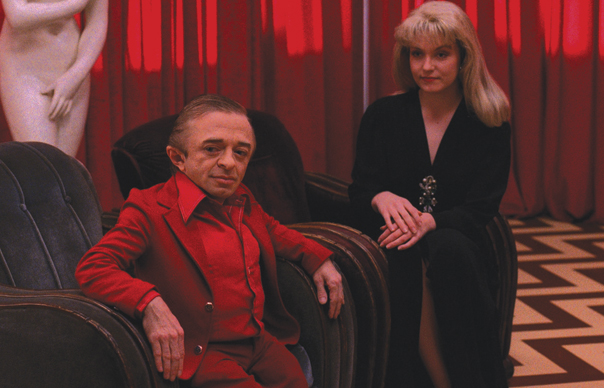Just as the release date has finally been confirmed for the brand new series of Twin Peaks, we return to where it all began. In this feature from our April 2010 issue (Take 155), where the show’s creators David Lynch and Mark Frost, and actors including Kyle MacLachlan, Ray Wise and Grace Zabriski...
ABC, then one of the big three American networks, unexpectedly loved the pilot. They ordered seven more episodes, eventually screened in the US after the pilot in April and May 1990, and – better still – extended autonomy to the team. “They left us totally alone,” Lynch says. “The first season, especially, we had a very beautiful relationship with ABC.”
“Twin Peaks is different,” the local sheriff warns Cooper when he arrives in town, “it’s a long way from the world.” But the world came to Twin Peaks in droves. Julee Cruise and Angelo Badalamenti’s theme tune, “Falling”, became a Top 10 hit in the UK. “Damn fine coffee” T-shirts proliferated. Lynch’s daughter Jennifer published a lucrative spin-off book, The Secret Diary Of Laura Palmer. Each week, millions were baffled by the accumulating complexities of the murder case; charmed by Cooper’s esoteric methods of crimefighting; and, occasionally, terrified. The nightmarish Bob – a demon responsible, on some level, for Laura’s death – was played by Frank Silva, the show’s set director, after Lynch had caught his grimacing reflection in a mirror. “He’s actually the sweetest guy in the world,” Frost insists.
Far from being alienated by Lynch’s surreal turns, the fans lapped them up. In Episode Three, a dream sequence found Cooper, draped with a dusty gossamer that made him seem 20 years older, sat in a hotel lobby with a living Laura Palmer and a nattily dressed dwarf. The camera speed stuttered and the soundtrack was slowed. There were subtitles (“Let’s rock!”) when the dwarf (actor Michael Anderson) spoke. Laura whispered the name of her killer into Cooper’s ear. When he woke up, Cooper had forgotten the name.
By the end of the first season, however, the network was bending towards public demand that Lynch and Frost spill the beans.
“Life didn’t change,” Lynch says today of the mass popularity that followed season one. He appeared on the cover of Time, and his next feature film, 1991’s Wild At Heart, won the Palme D’Or at Cannes. “What changed was the solving of the murder of Laura Palmer. That killed Twin Peaks. Totally dead. Over. Finished. I didn’t want that to happen. No way. Everybody wanted it revealed. There was so much pressure. People getting crazy to find out who did it. It was the goose that laid the golden egg and they wanted us to kill it.”
Twenty years have not healed Lynch’s grievance. He still won’t acknowledge that Leland Palmer, as possessed by Bob (who may or may not have been a manifestation of Leland’s mental illness), was the killer.
“I don’t wanna talk about that,” he says, icily. “It could have been anybody. I never really went there mentally.”
Frost was left in the middle, determined to give the network – and, ostensibly, the people – what they wanted, without offending Lynch or sapping the show’s inventiveness.
“They actually wanted it resolved at the end of the first season. I was advocating something in the middle, halfway through the second year,” Frost says. He drew up three scenarios: three possible culprits in the Palmer murder, all of which he keeps under wraps to this day. “It’s not the Log Lady,” he replies, when pressed to reveal the alternative killers. The cast were kept in the dark, the script guarded like launch codes. Ray Wise was not told that Leland was the killer until the day the critical scenes were filmed. “I’ll never forget the look on his face,” remembers Frost.
“Yeah, it’s true,” admits Wise. “When I was told by Mark and David, I’m sure my face registered all those emotions. Surprise. Shock. Discomfort. It was something I dreaded. I had my own daughter. The idea that my character could possibly be the one to have killed his own daughter was something I was very uncomfortable with.”
Lynch’s reluctance to reveal the killer, however, proved prescient. While the second series – 22 episodes running between September 1990 and June ’91 – continued to have an endearing oddness running through it (notably David Duchovny, pre-X Files, as Cooper’s cross-dressing colleague), much of the air was sucked out of the final episodes.
“It’s hard for me to accept that Leland would be the perpetrator, because once it came to earth the mystery evaporated for me,” says MacLachlan. “But there wasn’t anything they could do. They created this giant beast and they needed to solve the mystery. The power of the show was the continuation of that mystery. Maybe today, because people are a lot smarter, it would have continued and been like a Lost. It would expand upon itself.”
A second murder mystery, as epic as “Who killed Laura Palmer?”, was planned. But first, Frost wanted a short period of grace to pass, so as not to appear tacky. “We were going to bring up Cooper’s past,” he says, “the whole Windom Earle story [involving Cooper’s former mentor, now deranged]. In hindsight, I wish I’d accelerated it.”



